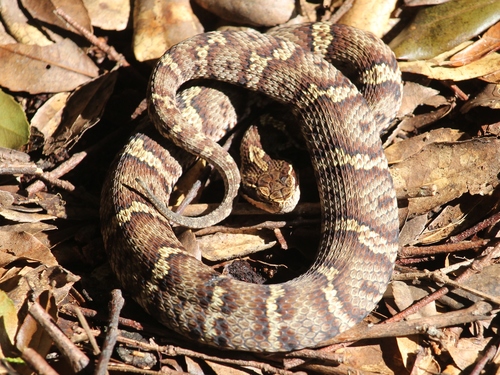
Mamushi
The Japanese mamushi (Gloydius blomhoffii) is a venomous pit viper renowned for its striking dark crossbands and triangular head. Found across Japan, it thrives in diverse habitats, from forests to wetlands, playing a vital role in controlling rodent populations. Beware, its venomous bite is potent yet rarely fatal.
14 years
Lifespan
Length: 30 - 64 cm
Size
Brown, Grey
Color
Medium
Aggression
Least Concern
Conservation Status
Stable
Population Trend
Characteristics
Gloydius blomhoffii, commonly known as the Japanese mamushi, is a venomous pit viper found in Japan. It inhabits forests, grasslands, and wetlands. The snake is recognized for its robust body, triangular head, and distinctive dark crossbands. It has a crucial role in controlling rodent populations.
Distribution Range of the Mamushi
Gloydius blomhoffii, commonly known as the mamushi or Japanese pit viper, is native to East Asia. Its geographical distribution includes Japan (Honshu, Shikoku, Kyushu, and several smaller islands), the Korean Peninsula, and parts of eastern China. This species is particularly prevalent in rural and semi-rural areas across these regions.
Mamushi's Habitat
Environmental Conditions
The mamushi thrives in temperate climates with distinct seasonal variations. It is typically found in diverse habitats ranging from lowland forests, grasslands, marshes, and agricultural fields to mountainous regions. The species favors environments that provide ample cover and a humid microclimate, such as dense underbrush or rocky terrains.
Ecological Niche
Gloydius blomhoffii occupies an ecological niche as a terrestrial predator. It preys on small mammals, birds, amphibians, and occasionally insects. The species is well-adapted to both moist and dry habitats, exhibiting a preference for areas with abundant prey and sufficient hiding spots. As a pit viper, it uses heat-sensing pits to locate prey, making it an effective nocturnal hunter.
Copyright @ Nature Style Limited. All Rights Reserved.
 English
English